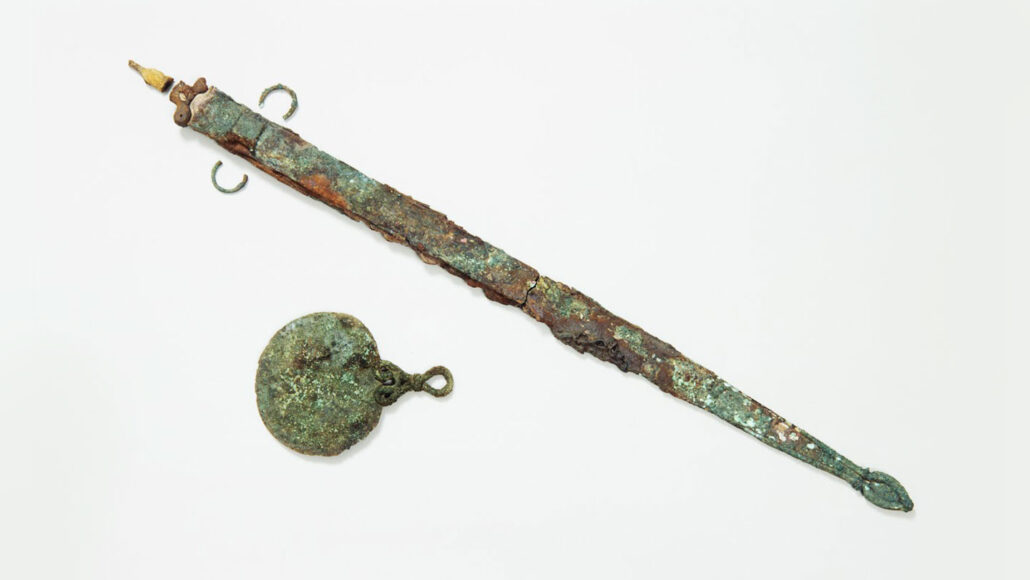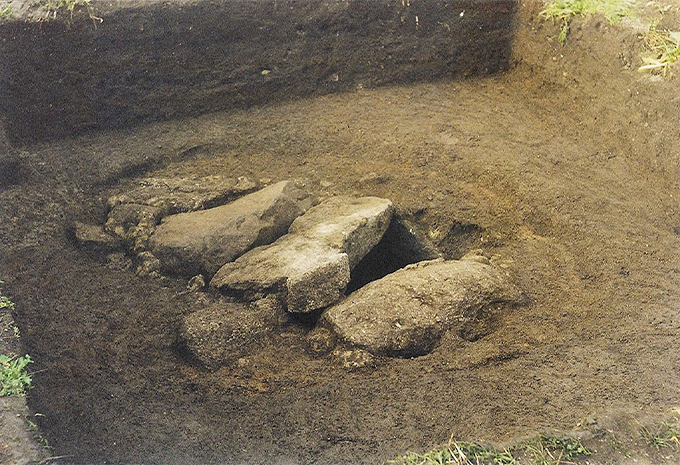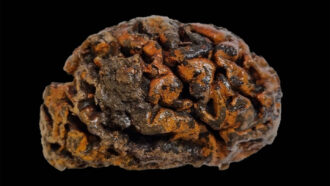biologist: A scientist involved in the study of living things.
bronze: A metallic alloy that consists primarily of copper and tin, but may include other metals. It is harder and more durable than copper.
carbon dating: Short for radioactive-carbon dating or carbon-14 dating. A way to measure the age of organic materials — ones containing carbon. Carbon-14, a weakly radioactive isotope, forms in Earth’s upper atmosphere as cosmic rays hit nitrogen atoms. This carbon joins with oxygen to form carbon dioxide, which living organisms take up and incorporate in their tissues. When those organisms die, they stop exchanging carbon with the environment and the share of the carbon-14 isotope starts to fall at a constant rate (one set by the law of radioactive decay). By measuring the share of carbon-14 to carbon-12 in the organism’s remains, scientists can determine how long ago it died.
chromosome: A single threadlike piece of coiled DNA found in a cell’s nucleus. A chromosome is generally X-shaped in animals and plants. Some segments of DNA in a chromosome are genes. Other segments of DNA in a chromosome are landing pads for proteins. The function of other segments of DNA in chromosomes is still not fully understood by scientists.
colleague: Someone who works with another; a co-worker or team member.
enamel: The glossy, hard substance that covers a tooth.
extract: (v.) To separate one chemical (or component of something) from a complex mix. (noun) A substance, often in concentrated form, that has been removed from some source material. Extracts are often taken from plants (such as spearmint or lavender), flowers and buds (such as roses and cloves), fruit (such as lemons and oranges) or seeds and nuts (such as almonds and pistachios). Such extracts, sometimes used in cooking, often have very strong scents or flavors.
gene: (adj. genetic) A segment of DNA that codes, or holds instructions, for a cell’s production of a protein. Offspring inherit genes from their parents. Genes influence how an organism looks and behaves.
Iron Age: A term for ancient human societies that made great use of iron throughout their culture. This period followed directly after the Bronze Age, and is typically described as starting around the 12 th century B.C. in Greece, India, Iran, and the Middle East. It started later in other parts of Europe and what is now Turkey. This period continued on throughout all of these regions for many, many hundreds of years.
protein: A compound made from one or more long chains of amino acids. Proteins are an essential part of all living organisms. They form the basis of living cells, muscle and tissues; they also do the work inside of cells. Antibodies, hemoglobin and enzymes are all examples of proteins. Medicines frequently work by latching onto proteins.
radiocarbon dating: Short for radioactive-carbon dating or simply carbon dating. A way to measure the age of organic materials — ones containing carbon. Carbon-14, a weakly radioactive isotope, forms in Earth’s upper atmosphere as cosmic rays hit nitrogen atoms. This carbon joins with oxygen to form carbon dioxide, which living organisms take up and incorporate in their tissues. When those organisms die, they stop exchanging carbon with the environment and the share of the carbon-14 isotope starts to fall at a constant rate (one set by the law of radioactive decay). By measuring the share of carbon-14 in the organism’s remains, scientists can determine how long ago it died.
X chromosome: A portion of an animal’s genetic inheritance that appears on a sex chromosome known as “X”. Females will usually have two X-chromosomes; males will typically have one.
Y chromosome: A portion of an animal’s genetic inheritance that appears on a sex chromosome known as “Y”. Males will usually have a Y- and an X-chromosome. Females ordinarily have no Y-chromosomes.









